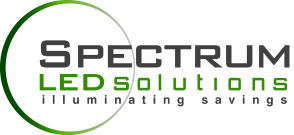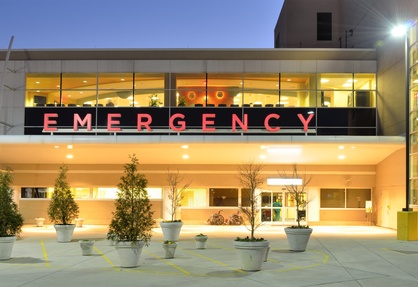See how LED lighting can lead to leaner, greener, healthier facilities.
By Ray Sjolseth
Medical facility administrators have so much to deal with every day that sometimes larger, important issues such as sustainability get pushed aside because they’re too time-consuming or just not priority over day-to-day operations. But a simple modification can save healthcare facilities upwards of tens of thousands of dollars and dramatically reduce energy consumption: implementing LED lighting. In commercial spaces, LED lighting is the lowest hanging fruit to reduce both energy bills and carbon footprints.
LED lighting is an effective strategy for achieving energy and cost savings while improving the safety, lighting quality and ambiance of healthcare facilities. It performs better than fluorescent or incandescent lighting with regard to energy efficiency, maintenance costs, safety, visual comfort and quality of light. And although LED products may cost more upfront, they typically pay for themselves in energy savings within two years.
Major Savings
Memorial Sloan-Kettering Cancer Center recently completed a parking structure retrofit project that replaced nearly 700 fluorescent fixtures with LED lights. The cancer center’s lighting energy cost has been reduced by almost 57 percent and their energy consumption by 160,000 kWh annually, saving enough electricity to power more than 180 U.S. homes for one month. Their green initiative also earned the medical center a $22,000 rebate from Con Edison. Although the cost of converting a facility from traditional lighting products to LED lighting is an investment, retrofits can be performed in segments – just as Memorial Sloan- Kettering chose to focus on their garage – rather than tackling an entire building at once, making the financial commitment more manageable.
Garages are good places to begin a retrofit as artificial lighting in these structures is almost never turned off. Areas where artificial lighting is used for many hours a day typically provide a very rapid return of investment when converted to LED lighting. For healthcare facilities, hallways, stairwells, elevators, basement maintenance areas and waiting areas are also lit 24 hours a day and thus are other ideal areas of focus for retrofit projects.
Lower HVAC Bills
The high efficiency of LED lamps provides benefits beyond immediate energy savings. Medical facilities can also lower their heating, ventilation and air conditioning (HVAC) bills by switching to LEDs. About 90 percent of the energy consumed by incandescent lights is emitted as heat, not light. This heat warms ambient air and puts additional strain on HVAC systems. LEDs are around nine times more efficient than incandescents and emit only 10 percent of the energy they consume as heat. With LEDs installed, the mechanical equipment it takes to cool a facility will actually cycle on and off less.
Additionally, replacing traditional lighting products with LEDs reduces the electrical burden on a building and its generators. If, in a blackout, the lights powered by a facility’s generators don’t require very much power, the electricity produced by those generators can be put to other uses.
Less Maintenance
Incandescent and fluorescent lighting products usually have a low upfront cost but generate significant maintenance costs. According to Mazzetti, Nash, Lipsey, Burch, an engineering group specializing in the construction of healthcare facilities, 15 to 20 percent of standard fluorescent ballasts and 70 percent of fluorescent lamps will need to be replaced every year, whereas LED fixtures are ballast-free, maintenance-free and often last for five to 10 years. While many commercial LED lamps are rated for 50,000 hours of operation, fluorescent lamps last an average of 8,000 and incandescent lamps only last approximately 1,200 hours. The labor required for addressing the quick burnout of incandescents and fluorescents can be a burden on maintenance crews in healthcare facilities. Memorial Sloan-Kettering will save more than $4,000 per year in maintenance fees alone in their parking garage. Frequent lamp changing can also affect patient comfort and privacy, making LEDs an attractive choice for patient rooms and common areas, too.
Increased Safety
Fluorescent lamps contain mercury, which can present a nasty problem if a lamp is dropped or broken. The procedure for handling broken fluorescents (and preventing mercury exposure) is time-consuming and cumbersome. Furthermore, the American Institute of Architects’s “Guidelines for the Design and Construction of Health Care Facilities” recommends the elimination of mercury from light fixtures. Eliminating mercury from the premises helps facilities seeking LEED accreditation earn more points. LEDs do not contain mercury and, as solid-state lighting devices, are more robust than traditional lighting technologies. Many LED lamps do not contain glass at all and are shatter-resistant. Retrofitting with LEDs is an excellent way to help reduce patient risk and achieve LEED certification.
LED lamps can help create a more pleasant, calming, and productive work, rest and healing environment. LED lamps do not hum or flicker like fluorescents often do, reducing the propensity of some individuals to develop headaches. Also unlike fluorescents, LED lamps used for general illumination do not produce UVR. This makes them a much more comfortable alternative for lupus patients and individuals with photosensitivity.
By using LED lighting, medical facility administrators have more time to address urgent daily matters and focus on patient care. LED lights are an economically viable and socially responsible alternative to incandescent or fluorescent lamps for healthcare facilities. They have clear energy and cost saving
benefits due to product lifespan, efficiency and lower maintenance costs. LEDs can also be instrumental in creating a healthy, peaceful environment for all those working in, residing in or visiting healthcare facilities.

